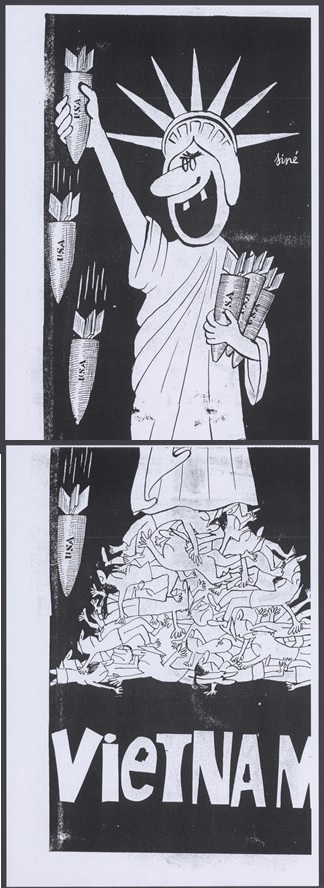GRassroots Movements
Provo:
AN AMSTERDAM PHENOMENON IN TRANSATLANTIC CONTEXT
The Provos were a quintessential Dutch phenomenon in mid-1960s Holland. In these years, a group of adolescent youth were able to upset the status-quo with a range of creative and provocative manifestations in Amsterdam, with which they sought to address issues such as conformism, urban pollution, consumerism, and militarization. It is most well-known for its domestic focus, with anarchist-inspired initiatives to collectivize bike transport in the city, and its disturbance at the royal wedding of Princess Beatrix. Provo’s international dimension is therefore an underexposed topic. Besides the pictures of the Witte Fietsen (“white bikes”) and smoke bombs, Provo’s legacy has produced an abundance of imagery that transcended Dutch borders and showed Provo’s strong engagement with the Cold War climate of the day. The Provo movement’s legacy could also not be contained by the Atlantic, and Provos erupted across the United States in the 1960s too.
Provos in New york
In New York, a protest movement named Provo popped up around 1966. On the right you see a pamphlet from these “Provos of New York”. Inspired by the Amsterdam movement, it calls for people of all backgrounds to join together to “provoke the state”, although these inspirations took their own form once they crossed the Atlantic to adapt to the national climate. With a somewhat harsher tone and a direct call for revolution, this pamphlet illustrates how Provo was by no means a transnationally organized movement, and that such like-named movements by no means meant they had the same methods and objectives.
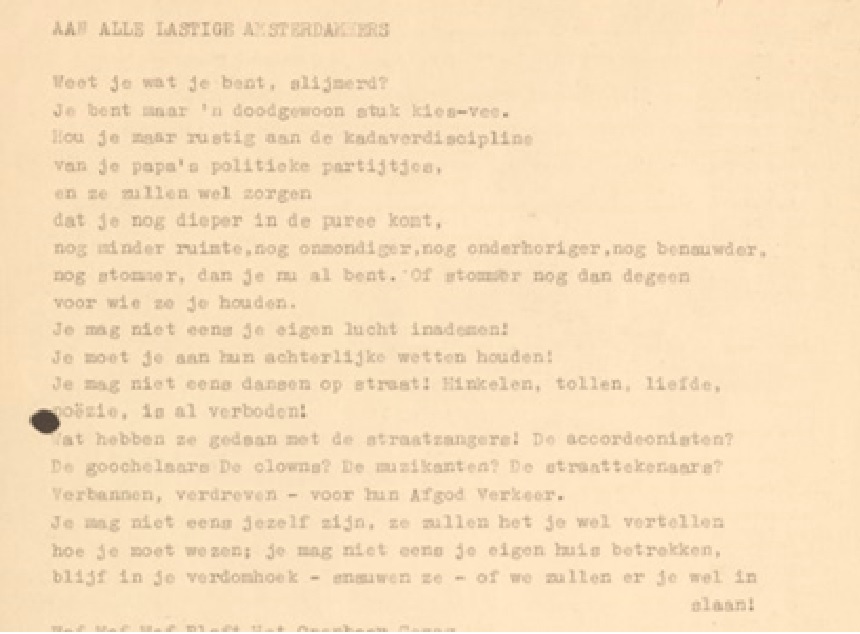
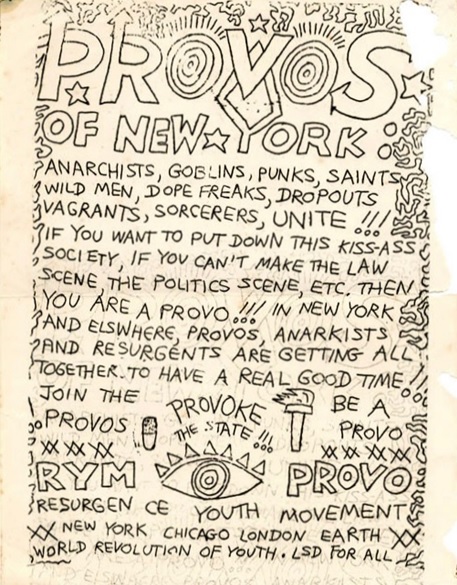
Left: Simon Vinkenoog, “Aan Alle Lastige Amsterdammers,” 28 May 1966, Archief Provo, Box 1, Map 15, Document 74, International Institute of Social History (Amsterdam).
Above: Resurgence Youth Movement, Provos of New York, ca 1966, mimeographed pamphlet, Provo Images, accessed February 1, 2021, https://www.provo-images.info/newyorkpamphlets.html.
PROvos in Los angeles
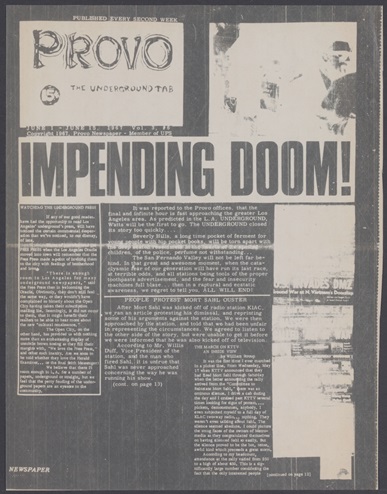
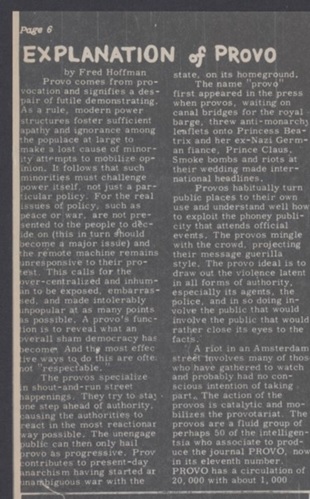
Provo: The Undeground Tab was an underground magazine published in Los Angeles starting in 1965. The magazine was explicitly inspired by the Dutch Provos.
In this issue from 1967, the authors elaborate on their roots, paying tribute to the Dutch movement’s innovative strategy, by which it sought to provoke violence from the authorities to the public eye. It also addresses Provo’s praised use of publicity to its advantage, remarking how their actions at the royal wedding were able to make international news headlines.
This Californian Provo publication magazine also indicates, again, how transatlantic inspirations from Provo should be seen as case-by-case phenomenon, rather than part of any international structure.
Top: Provo: The Undergroundtab 3, no.6 (June 1967), Archief Provo, Box 42, Map 7, International Institute of Social History (Amsterdam), 1.
Bottom: Fred Hoffman, “Explanation of Provo,” Provo: The Undergroundtab 3, no. 6 (June 1967), Archief Provo, Box 42, Map 7, International Institute of Social History (Amsterdam). 6.
The vietnam war
The Vietnam War was a prevalent theme in the Dutch Provos publications and actions. Provo criticized the war as an imperialist endeavor of the United States aided by its NATO allies. With the ironic symbolism of the Statue of Freedom, the image criticizes military power abroad. “America” is portrayed as a war-crazed figure with no regard for human suffering. The Provos advocated the retreat of all foreign troops, and self-determination for the Vietnamese through a number of actions during its two-year existence.
Provo was loosely inspired by anarchism, something that clearly expressed itself in its manifestations against war and militarization. Several key Provo affiliates were previously active in the Ban De Bom movement (“ban the bomb”), and Provo continued to address its principled aversion to nuclear weapons throughout its existence.
Right: Jiné, untitled, 1967, stenciled cartoon, Archief Provo, Box 2, Map 9, Document 144a, International Institute of Social History (Amsterdam).
